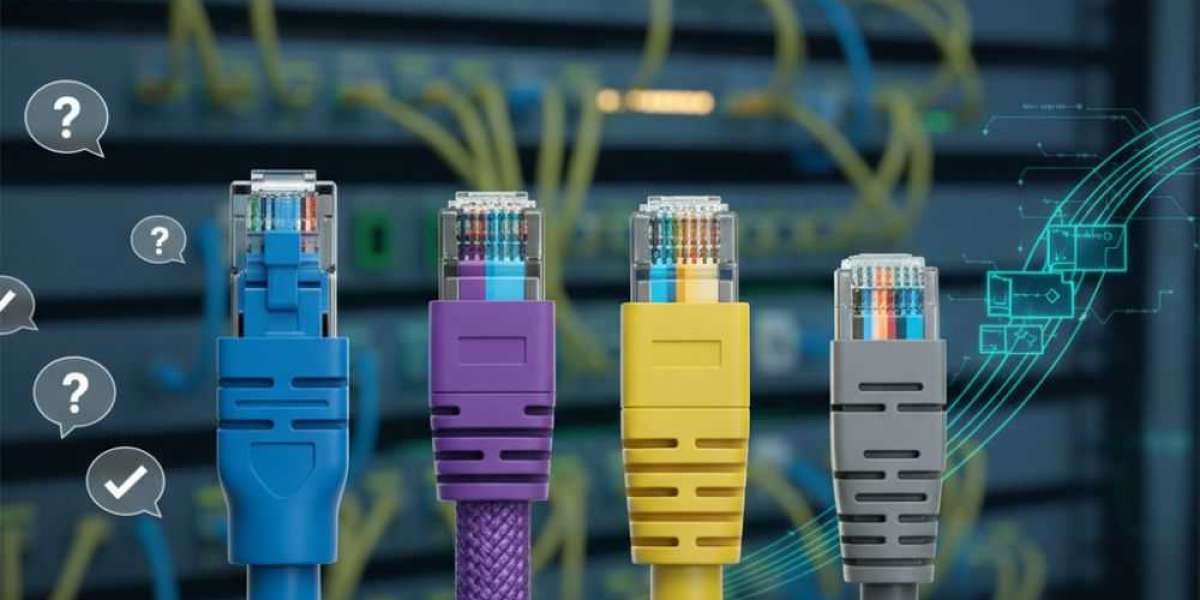Your internet connection is only as good as the cables that carry it. A networking cable might seem like a simple piece of equipment, but it needs proper care to keep your network running smoothly. Many people install these cables and forget about them until something goes wrong. This approach can lead to slow speeds, connection drops, and costly repairs.
Let's explore the maintenance steps you need to follow to keep your networking cables in top condition.
Why Does Your Networking Cable Need Maintenance?
You might wonder why a cable needs any maintenance at all. After all, it just sits there, right? Not quite. Your networking cable faces many challenges every day. Dust accumulates on connectors. Temperature changes cause expansion and contraction. People accidentally step on cables or move furniture over them. All these factors can damage your network infrastructure over time.
Regular maintenance helps you catch problems early. A small issue today can become a major headache tomorrow. When you take care of your networking cable properly, you save money, avoid downtime, and keep your network performing at its best.
Visual Inspection: Your First Line of Defense
Start with a simple visual check of your networking cable. Walk along the cable route and look for obvious problems. Check if the cable has any bends, kinks, or twists. A networking cable should run smoothly without sharp angles.
Look at the outer jacket of the cable. You want to see a smooth, intact surface. Watch out for cuts, cracks, or exposed wires. Even small damage to the jacket can let moisture in, which ruins the cable from the inside.
Pay special attention to areas where the cable turns corners or passes through walls. These spots get stressed more than straight runs. If you see wear in these locations, you might need to add extra protection or reroute the cable.
Check the connectors at both ends. The plastic clip should be intact and spring back when you press it. Look inside the connector to make sure all the pins are straight and present. Bent or missing pins mean you need a new connector or cable.
Keep Your Connections Clean
Dust and dirt are enemies of your networking cable. When particles get into the connectors, they block the electrical signals. This causes slower speeds or complete connection failures.
Clean your cable connectors every few months. Unplug the cable first. Use compressed air to blow out loose dust from the connector. Hold the can upright and use short bursts. Don't stick anything metal into the connector, as this can bend the pins.
For stubborn dirt, use a cotton swab slightly dampened with isopropyl alcohol. Gently clean the contacts and let them dry completely before plugging the cable back in. Never use water or household cleaners on your networking cable connections.
The ports where you plug in your cables also need cleaning. Use compressed air to clear dust from Ethernet ports on your router, switch, or computer. A clean connection ensures the best possible signal quality.
Cable Management Matters
How you organize your networking cable affects its lifespan. Cables that hang loose or get tangled wear out faster. They're also more likely to get damaged by foot traffic or moving equipment.
Use cable ties or velcro straps to bundle cables together neatly. Don't make the bundles too tight, though. Your networking cable needs a little breathing room. Overly tight bundles can squeeze the cable and damage the internal wires.
Keep cables away from the floor when possible. Use cable trays, conduits, or clips to run them along walls or under desks. This protects them from being stepped on or rolled over by chair wheels.
Maintain proper bend radius for your networking cable. Each cable type has a minimum bend radius listed in its specifications. Bending the cable tighter than this damages the internal structure. As a general rule, don't bend any networking cable sharper than four times its diameter.
Protect Against Environmental Factors
Your networking cable doesn't like extreme conditions. High heat can melt the insulation. Cold can make the jacket brittle. Moisture causes corrosion and short circuits.
Keep cables away from heat sources like radiators, heating vents, or hot equipment. If you must run a networking cable in a warm area, use a cable rated for higher temperatures.
In humid environments, check cables more often for signs of corrosion. Look for discoloration on the connectors or a green tint on the metal pins. If you see corrosion, replace that cable section immediately.
For outdoor installations, use cables specifically designed for outdoor use. Regular networking cable breaks down quickly when exposed to sun, rain, and temperature swings. Outdoor-rated cables have tougher jackets that resist UV damage and moisture.
Keep Cables Away from Interference
Electromagnetic interference (EMI) can disrupt the signals in your networking cable. The cable picks up electrical noise from nearby power cables, fluorescent lights, or motors. This interference causes data errors and slower network speeds.
Route your networking cable away from power cables. If they must cross, make them cross at a 90-degree angle rather than running parallel. Keep at least six inches of separation between networking cables and power cables.
Avoid running cables near large electrical equipment like air conditioners, refrigerators, or industrial machinery. The motors in these devices create strong electromagnetic fields.
Shielded networking cable provides better protection against interference. If you work in an environment with lots of electrical equipment, consider upgrading to shielded cables for your critical connections.
Test Your Cables Regularly
You can't see everything wrong with a networking cable just by looking at it. Internal wire breaks or connection problems might not show on the outside. Regular testing helps you find these hidden issues.
Use a cable tester to check your networking cable every six months. Basic testers cost less than $30 and tell you if all the wires connect properly. More advanced testers measure cable length, signal quality, and data speed.
Test cables that handle critical connections more often. If your business depends on a particular network link, test it monthly. This helps you replace failing cables before they cause downtime.
Keep records of your test results. When you see performance degrading over time, you know it's time to replace that cable before it fails completely.
Label and Document Your Cables
Good documentation makes maintenance much easier. Label both ends of every networking cable. Write where each end connects using clear, permanent labels. This helps you quickly identify cables when you need to test or replace them.
Keep a simple map showing where all your cables run. Note the cable type, length, and installation date. When you need to troubleshoot a problem, this information saves you hours of tracing cables through walls and ceilings.
Update your documentation whenever you add, remove, or move a cable. Accurate records are only useful if you keep them current.
When to Replace Your Networking Cable
Even with perfect maintenance, networking cables don't last forever. Replace any cable that shows physical damage like cuts, severe kinks, or broken connectors. Don't try to repair damaged cables with tape. The repair never works as well as a new cable.
Replace cables that fail tests repeatedly or show declining performance. If a networking cable worked fine for years but now causes connection problems, it's time for a replacement.
Consider replacing all your cables every five to seven years in commercial settings. This proactive approach prevents failures and ensures you have cables that meet current speed standards.
Conclusion
Maintaining your networking cable doesn't require special skills or expensive tools. Regular inspections, basic cleaning, proper cable management, and occasional testing keep your network reliable. Spend a few minutes each month on cable maintenance, and you'll avoid the frustration of unexpected network problems.
Your networking cable is the foundation of your digital connectivity. Treat it well, and it will serve you faithfully for years to come.
Sources: https://adaptiveblogs.com/how-to-choose-the-right-networking-cables-for-your-needs/
https://logcla.com/blogs/980631/How-Do-Networking-Cables-Transmit-Data








